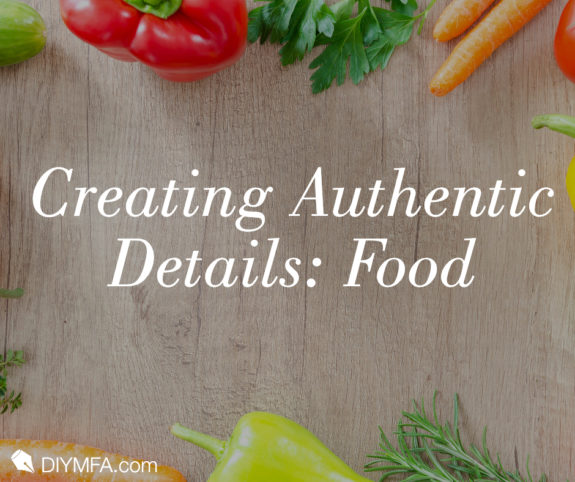What our characters eat depends on when and where they lived, their position in society, and, to some extent, what they were doing. So getting the food details right is one way we can fully immerse readers in our story. In the space of this article, I can’t begin to cover global evolution of foodstuffs throughout human history. But I hope a few examples will get your juices flowing to delve into what your characters would eat.
Grains of truth
Ever since the development of agricultural societies and the domestication of wild grains, some form of bread or cereal has been part of every diet: unleavened flatbreads (including things like tortillas in the Americas); loaves created by the use of yeast to produce a rise; boiled cereals, such as what we call oatmeal or cream of wheat.
Today, we’re all accustomed to industrially-produced flour, but in the past, the basic ingredient of bread was ground between two stones. The process often resulted in tiny stone chips and some amount of grain husks remaining in the flour. So the quality of one’s bread depended on the care that was taken to sift the flour. In the 12th-16th centuries in Britain, for example, there were even specific names for the bread that indicated either the type of grain used or the quality of the flour
Paindemaine (and the slightly later term “manchet”) was the finest white bread, made from wheat flour that had been sifted three or more times – so it was expensive and generally eaten only by the rich. No breaking a tooth by chomping down on a tiny piece of rock for the aristocrats! ?
Wastel was also a good quality bread made of wheat flour; but most often, the flour had been sifted only a couple of times, so it was just a bit riskier to the teeth.
Cocket was a very early name for a lower-quality white bread, and the term appears to have been completely obsolete by the mid- to late-1400s.
If your characters were from the lower classes, they might have eaten tourte, which contained both the husk and the flour, or horsebread, in which the flour included ground beans, lentils, or peas along with any type of grain. Clapbread was either barley bread or oatcakes.
And don’t forget the trencher. A thick slice of stale bread was often used as a plate. At the end of the meal, diners had a choice: eat the trencher themselves, give it to the servants or the poor, or feed it to the dogs or other domestic animals.
Flaked cereal as we know it today didn’t emerge until the end of the 19th century. Boiled cereals based on oats and wheat were long known simply as porridge. Another sort of boiled grain – grits – is of Native American origin and thought to have originated with the Muskogee tribe in the 16th century. Hasty pudding – a thick, boiled-grain concoction that often had raisins or currants and a sweetener added, to make it a dessert – originated in England from where it was carried to colonial America and adapted to be made with corn as well as wheat or oats. When made with corn, it might also be known as corn meal mush, if not sweetened, or Indian pudding if made as a dessert.
Meat and veggies
Meat on the table every day is a relatively modern phenomenon, largely made possible by the advent of refrigeration. Prior to that time, meat had to be eaten before it spoiled, or it had to be preserved in some manner – salted, dried, smoked, cured. In many cultures, the lower classes only had meat as small bits in a mostly vegetable-based soup or pottage. But all cultures developed methods for preserving meat. Is your story set in the American frontier of the 19th century? Jerky or salted meat were the preferred methods of providing protein for long journeys or for the winter months when game could be difficult to find. Be sure to investigate what meat was prevalent in the locale of your story. Was it wild game? What sort of game was hunted? Did people eat more fowl or fish than meat?
Greens, root vegetables, legumes – these exist pretty much everywhere in some form or other. Find out which ones were commonly available and which were delicacies in the place and time of your story. Is your story set in the rural American South? Poke Salad really is a thing – not just the title of a 1968 song. If your setting is Central America, people ate tomatoes as far back as 500 BC. The Spanish and Italians adopted them into their cuisine right away when the conquistadors brought them back from the New World in the early 1500s. But in France and northern Europe, they were thought to be related to deadly nightshade (and therefore poisonous) until much later in the century – cultivation in Britain began in the 1590s. And don’t forget – no potatoes outside Bolivia and Peru before the mid-1500s. If you’re writing about the Inca Empire, let your characters enjoy all the potatoes they’d like. But Europe and the rest of the world didn’t know about them until the Spanish brought them from South America.
The spice of life
We take spices for granted today and even complain if our local grocery is out of ground nutmeg when we’re stocking up for holiday pies. Not so in the past, at least in western societies. When spices had to be brought from the east by caravan, they were terribly expensive and so generally only attainable by the wealthy, who typically stored them in locked spice chests. You may be able to just make out the hasps for a small padlock in the picture.
Food at war
Is your historical fiction set in war time? Supposedly, Napoleon once said, “C’est la soupe qui fait le soldat” (The soup makes the soldier). And feeding the troops has always been one of the great logistical problems of war. During World War I, British General John Monash is reported to have said, “It takes a couple of thousand men and horses with hundreds of wagons, and 118 huge motor lorries, to supply the daily wants of my population of 20,000.”
Depending on the time of the war in your narrative, what the men ate and what it was called might be very different. As an example, let’s just look at the US Army from World War I through the Vietnam War. In WWI, the threats to fresh food came not just from the rats and vermin that infested the trenches, but also from the risk of gas attacks, which would poison the food. So the army devised Trench Rations, which were meat of some sort (corned beef, salmon, or sardines) in sealed cans and crackers or hard tack, also canned. Multiple cans packed in a canvas bag were issued to each soldier. They were bulky and heavy to carry. The Reserve Ration, which came later in the war, added a packet of pre-ground coffee, some sugar, and a bit of salt.
By World War II, the main form of combat meal was the C-ration, which consisted of one meat unit (either meat and beans, meat and potato hash, or meat and vegetable stew) and one bread-and-dessert unit, each unit in a separate can. A soldier’s daily sustenance was 3 C-rations. The K-ration came in a box, 3 boxes per day, each marked as “Breakfast,” “Dinner,” or “Supper.” Note the little keys to open the canned meat.
K-rations were intended to be used by airborne assault troops, tank crews, and others on short-duration missions.
By the time of the Vietnam war, these rations had been replaced by MCIs (for Meal, Combat, Individual), which included a bit more variety in what they contained – though the ubiquitous cans were still present. Despite having a different designation by the army, MCIs were still popularly called C-rations. Today’s MREs (Meal, Ready-to-eat) didn’t appear on the scene until 1980.
Tip of the iceberg
As I said at the beginning, this is just the tip of the iceberg. What did the caravans on the Silk Road do for food? What was served in the dining cars of passenger trains in the 1920s in the US? In Europe? What did people eat to try to survive during the Irish potato famine? What was the diet of the Crusaders during their journey to the Holy Land? Did they eat the local food once they’d arrived? What was the diet of the Hawaiian islanders when Captain Cook landed there in 1778?
No, you don’t need to know the answer to all of these questions and the hundreds more any of us could think to pose. Just ask the right questions for your narrative and serve your characters proper meals.

Pamela Taylor’s inspiration for her first book turned out to be that final straw that pushed her to leave the corporate world behind for the world of words and imagination. Now an author and an editor, she loves helping others polish their stories almost as much as she enjoys writing her own. She’s a member of the DFW Writers Workshop and the Editorial Freelancers Association and has been on the judges panel for the Ink & Insights Contest for three years. You can learn more about her books at secondsonchronicles.com, and about her editing services at editing4you.com.







